muertosiro: me



me
c0ssette: William-Adolphe Bouguereau "Art and Literature"...
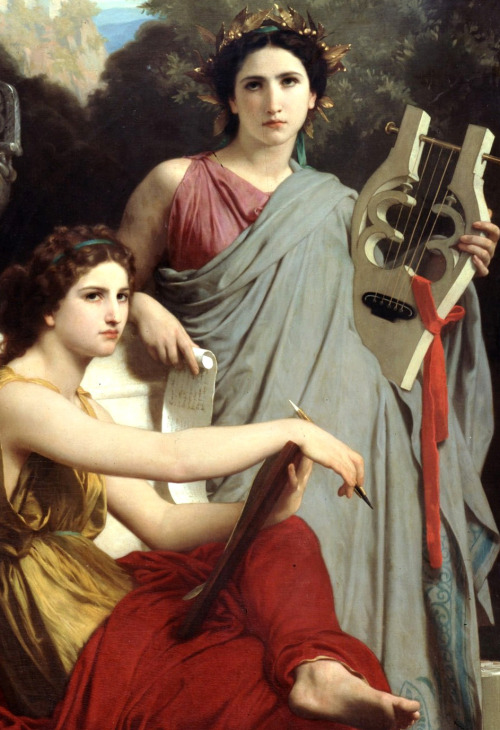
William-Adolphe Bouguereau "Art and Literature" 1867.
"Μόνοις οὐ γίγνεται θεοῖσι γῆρας οὐδὲ κατθανεῖν ποτε, τὰ δ᾿ ἄλλα συγχεῖ πάνθ᾿ ὁ παγκρατὴς χρόνος."
"Μόνοις οὐ γίγνεται θεοῖσι γῆρας οὐδὲ κατθανεῖν ποτε, τὰ δ᾿ ἄλλα συγχεῖ πάνθ᾿ ὁ παγκρατὴς χρόνος."- To the gods alone old age and death never come, but all-powerful time lays waste to everything. (Sophocles)
colourthysoul: George Owen Wynne Apperley - A Dancer Of Ancient...
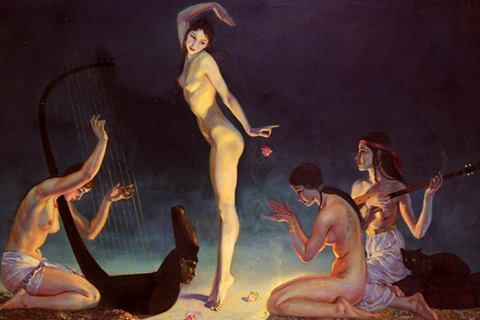
George Owen Wynne Apperley - A Dancer Of Ancient Egypt
sarahnesthetic: sosuperawesome: Louise McNaught, on...

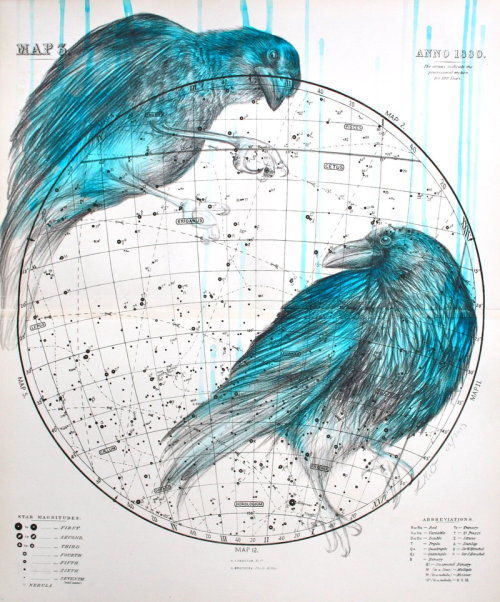


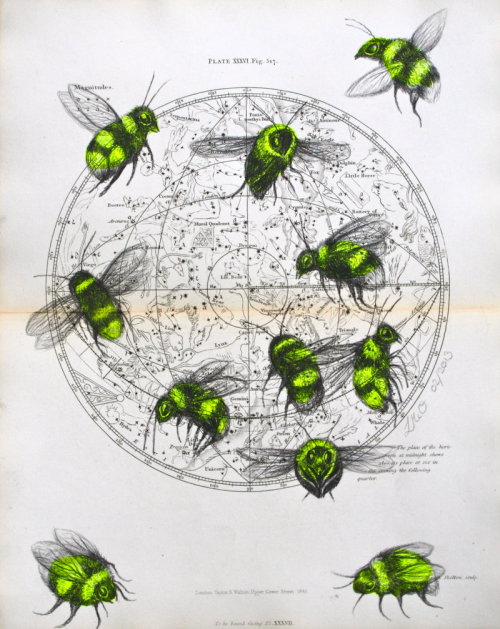
Louise McNaught, on Tumblr
bleerios: honeysaint: Having separate continents is so stupid. I'm over it. Reblog if you miss...
Having separate continents is so stupid. I'm over it. Reblog if you miss pangea
psychotic-art: Gustav Klimt
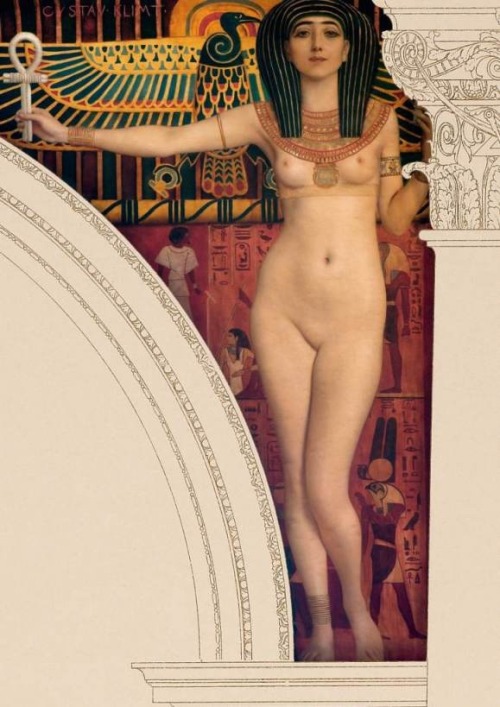
Gustav Klimt
ancientpeoples: The Seikilos Epitaph Performed by SAVAE An...
The Seikilos Epitaph
Performed by SAVAE
An Ancient Greek tombstone dated between 200 BC and 100 AD, it contains the world's oldest piece of music that survives complete. The epitaph receives its name from its inscription that reads,
"I am an image on stone. Seikilos placed me here as an everlasting sign of deathless remembrance"
Along with the musical notation, are these lines of poetry meant to accompany the music.
Ὅσον ζῆς φαίνου
μηδὲν ὅλως σὺ λυποῦ
πρὸς ὀλίγον ἐστὶ τὸ ζῆν
τὸ τέλος ὁ χρόνος ἀπαιτεῖ
"As long as you live, Shine.
Be completely without grief;
For life is only for a short while,
And time demands an end"
rudjedet: ancientpeoples: Wooden statuette of Anubis...
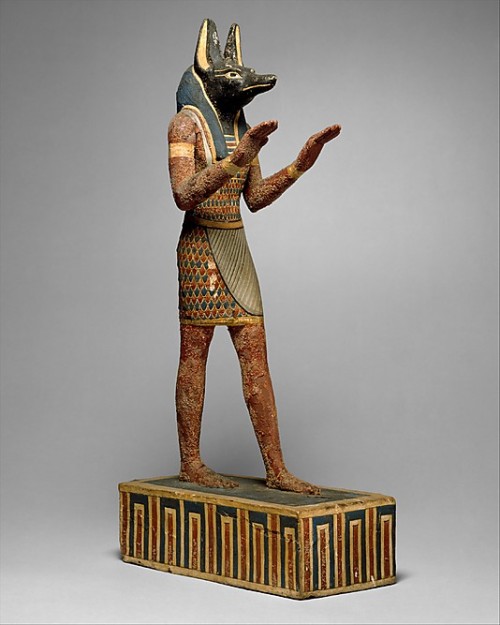
Wooden statuette of Anubis
Macedonian – Ptolemaic Period, 332 – 30 B.C.
Egyptian.
The god Anubis is the god of mummification. He has the head of a jackal and human body. His hands are raised with the palms down, a pose when he is performing the purification ritual on mummies.
Source: The Metropolitan Museum
Calm yo tits.
"Every day we see something new in this world; jokes become realities, and the jokers find the tables..."
"Every day we see something new in this world; jokes become realities, and the jokers find the tables turned on them."- Miguel de Cervantes
pubertad: Egon Schiele, Totes Mädchen (detail), 1910
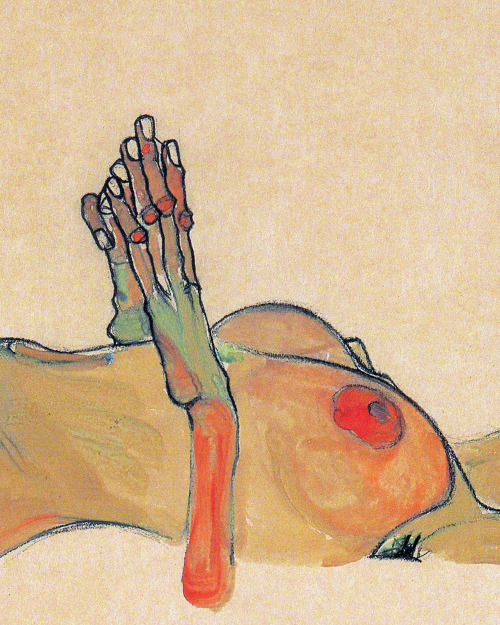
Egon Schiele, Totes Mädchen (detail), 1910
"To become what one is, one must not have the faintest notion what one is."
"To become what one is, one must not have the faintest notion what one is."- Friedrich Nietzsche
"There may be more beautiful times, but this one is ours."
"There may be more beautiful times, but this one is ours."- Jean-Paul Sartre
roninonabike: paul manship, diana

paul manship, diana
statue-porn: || Hermes binding his sandals after having killed...
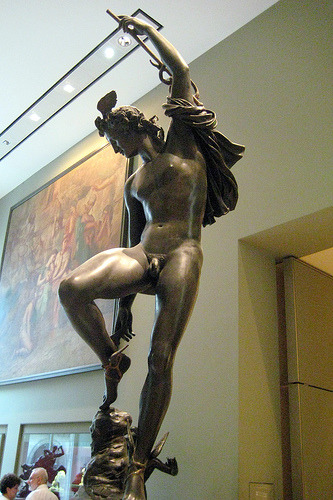
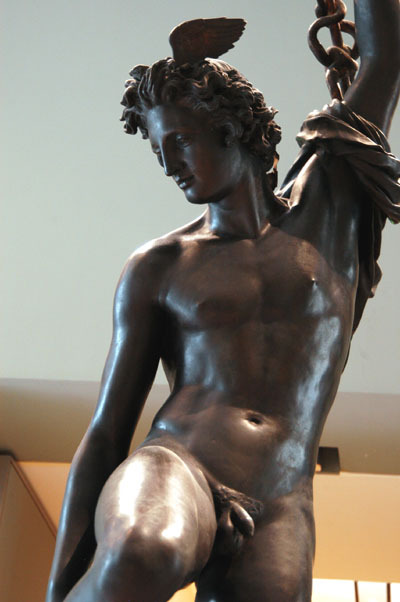
|| Hermes binding his sandals after having killed Argos, François Rude, 1834.
Currently located in the Louvre, Paris.
ancientpeoples: Silver handle of a dish Roman 2nd to early 3rd...

Silver handle of a dish
Roman
2nd to early 3rd century A.D.
Handle is decorated with a hunting scene
Source: The Metropolitan Museum
rudjedet: ancientpeoples: Roman Bathroom Habits The Romans...
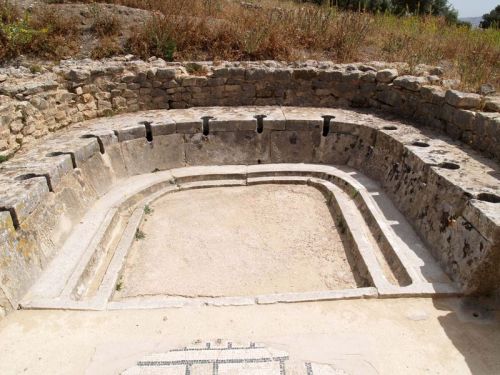
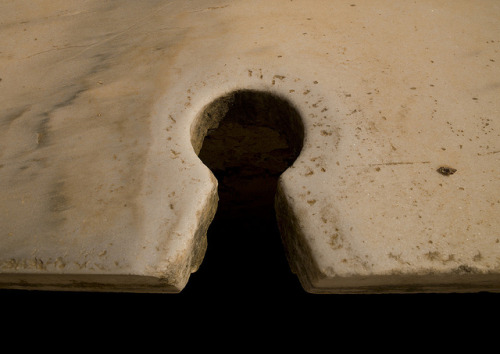
Roman Bathroom Habits
The Romans were not shy when it came to doing their "business". Something that we today regard as an act that demands a certain level of privacy, in ancient Rome, bathroom habits were much more open and, to a great extent, totally lacking in privacy. In a city of over one-million people, ninety-five percent of them did not have access to a private bathroom. Only wealthy Romans could afford the luxury of having a private bathroom by tapping directly into the public aqueducts, which brought running water into their homes. However, for the majority of Romans lacking their own bathroom, there were two options available.
The first option was to go in any ordinary pot that you kept in your home or place of business; moreover, in the city of Rome itself, large urinal pots stood at several street corners. These "piss pots" actually had a very significant role in everyday life. The pots were collected by fullers because the urine functioned as an ancient form of bleach. Stale urine, known as wash, was a source of ammonium salts and assisted in cleansing and whitening cloth; urine made your whites white! In addition, tanners soaked animal skins in urine in order to remove hair fibers before tanning. Oddly enough these pots were eventually taxed by the emperor Vespasian which resulted in the piss pots being nicknamed after him. Flying waste was also a very common problem in Ancient Rome. Ancient writers mention anecdotes involving citizens emptying their pots from third or fourth-story windows on to whoever was walking in the street. There were laws enacted solely for the purpose of protecting those who had been hit by flying waste, "Damages to be paid by throwers of waste into the street if the person hit was injured, no damages paid for clothing or if hit outside of daylight hours." Nevertheless, the simplest way of disposing of your waste was to throw it into the street, because the streets of Rome were naturally angled towards the center allowing waste to roll into the gutters. Some Insulae,(multi-story apartment buildings), however, could be linked by gravity-fed pipes that led to a main cesspit. Farmers would collect "night-soil" from these cesspits in order to fertilize their fields.
The second option available to the inhabitants of Rome was to head to a public bathroom. Ancient Roman public bathrooms were made out of long rows of massive stone with a hole cut into the stone every few feet. Located in front of the seating area is a channel or elongated basin where your sponge sticks are located. Sponge sticks you say, what the devil for? The Romans obviously did not use toilet paper, but used sponges soaked in water. You would grab a sponge attached to a stick and clean yourself, if you need more cleaning you could plunge the sponge stick back into the little stream and clean some more. Once you are finished with the sponge stick, you scrape the sponge against the side of the stone hole you are seated on and let it fall into the flowing water; quite a logical system reminiscent of modern day bidets. Underneath those Roman derrières flowed a system of plumbing that rivaled modern day cities like New York City. Constant running water flushes away the waste into an enormous sewage systems that runs under the streets of Rome, the Cloaca Maxima (Great Drain). This system is made possible by several aqueducts that flow into the city keeping it supplied with fresh flowing water. The Roman's effective sewage system was not in place in order to combat the possibility of disease, but more so to combat smell; the role of impure water in causing disease seemed to be little understood by the Romans.
In some ancient bathrooms there is space for one-hundred people at a time. The bathrooms are open to all genders and all ages, so imagine men, women, and children all standing or sitting, doing their business next to one another in an open space. People are discussing business or gossiping to one another while going to the bathroom. Since for most Romans privacy is a unheard of aspect of life, why would it be different in this situation? However, the public bathrooms are not only visited by the common citizen, the wealthy also frequent them. Every location in ancient Rome where large crowds gather is an opportunity for wealthy Romans to pander to their constituents. Most upper-class Romans were running for some sort of political office, so the public bathrooms were a great location for mingling with the Roman people. Therefore, if you wished to hear the local gossip, chat with a friend or stranger, or simply do your business, the public bathrooms are always a good choice. Roman bathroom habits were communal, lacking in privacy, and surprisingly efficient, and they also allowed one to say, "I had a lovely conversation with a few people while sitting on the toilet the other day."
This is some good quality shit.
Thank you for making me laugh out loud while I was in Greek class Sonja! :)
ancientpeoples: Terracotta Vase in the Form of a Lobster...
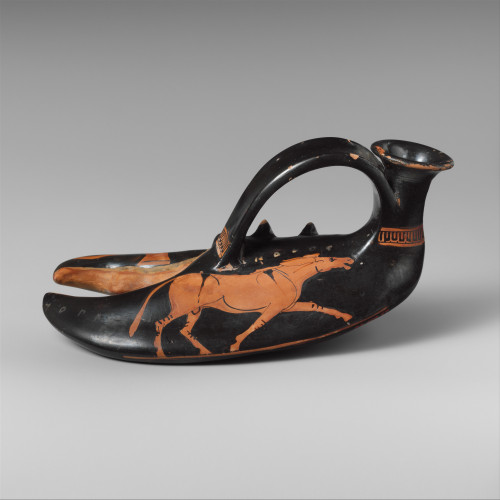
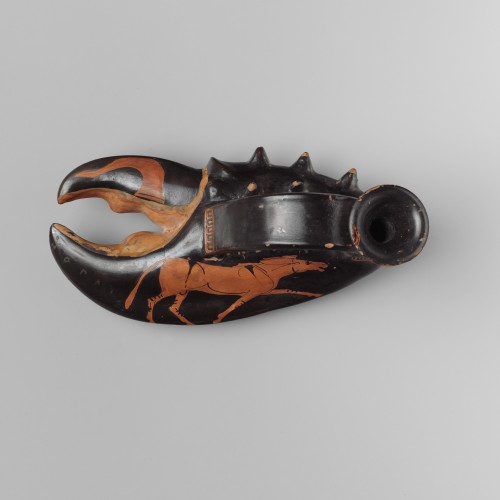
Terracotta Vase in the Form of a Lobster Claw
ca. 460 BC
Greek, Classical
Because so many aspects of Greek life depended on the sea, a vase in the shape of a lobster claw is not surprising. It is, however, exceptional and may be a variant of the askos—a bag-shaped oil container provided with a vertical mouth and strap handle. The Dionysiac iconography of the lobster claw suggests that it was a novelty item used at symposia (drinking parties).
Source: Metropolitan Museum of Art
ancientpeoples: Marble Sarcophagus with the Triumph of Dionysos...
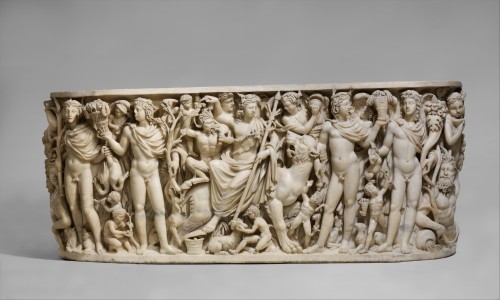
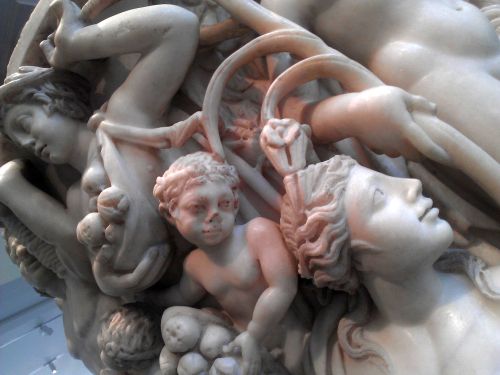
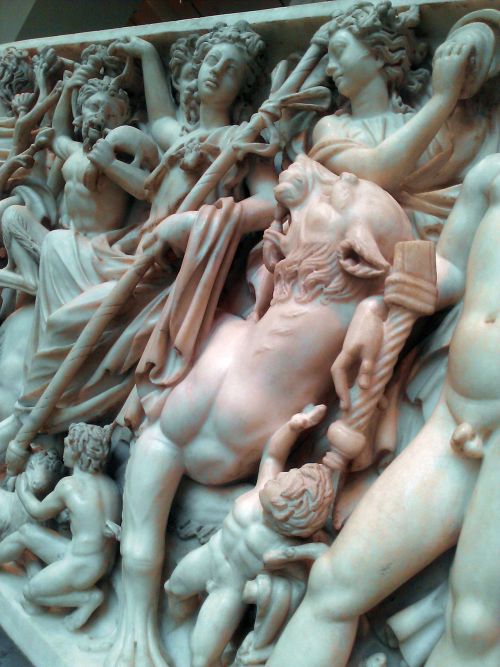
Marble Sarcophagus with the Triumph of Dionysos and the Seasons
ca. AD 260 - 270
Late Imperial Roman
This is a highly ornate and extremely well-preserved Roman marble sarcophagus. In contrast to the rough and unsightly back, the sides and front of the sarcophagus are decorated with forty human and animal figures carved in high relief. The central figure is that of the god Dionysos seated on a panther, but he is somewhat overshadowed by four larger standing figures who represent the four Seasons (from left to right, Winter, Spring, Summer, and Fall). The figures are unusual in that the Seasons are usually portrayed as women, but here they are shown as sturdy youths. Around these five central figures are placed other Bacchic figures and cultic objects, all carved at a smaller scale. On the rounded ends of the sarcophagus are two other groups of large figures, similarly intermingled with lesser ones. On the left end, Mother Earth is portrayed reclining on the ground; she is accompanied by a satyr and a youth carrying fruit. On the right end, a bearded male figure, probably to be identified with the personification of a river-god, reclines in front of two winged youths, perhaps representing two additional Seasons.
The sarcophagus is an exquisite example of Roman funerary art, displaying all the virtuosity of the workshop where it was carved. The marble comes from a quarry in the eastern Mediterranean and was probably shipped to Rome, where it was worked. Only a very wealthy and powerful person would have been able to commission and purchase such a sarcophagus, and it was probably made for a member of one of the old aristocratic families in Rome itself. The subjects - the triumph of Dionysos and the Seasons - are unlikely, however, to have had any special significance for the deceased, particularly as it is clear that the design was copied from a sculptor's pattern book. Another sarcophagus, now in the Hessisches Landesmuseum in Kassel, Germany, has the same composition of Dionysos flanked by the four Seasons, although the treatment and carving of the figures is quite different. On the Badminton sarcophagus the figures are carved in high relief and so endow the crowded scene with multiple areas of light and shade, allowing the eye to wander effortlessly from one figure to another. One must also imagine that certain details were highlighted with color and even gilding, making the whole composition a visual tour de force.
Very few Roman sarcophagi of this quality have survived. Although the Badminton sarcophagus lacks its lid, the fact that it was found in the early eighteenth century and soon thereafter installed in Badminton Hall means that it has been preserved almost intact and only a few of the minor extremities are now missing.Source:Metropolitan Museum of Art
Supplementary photos belong to admin
fleurdulys: The Siren - Edward Armitage 1888
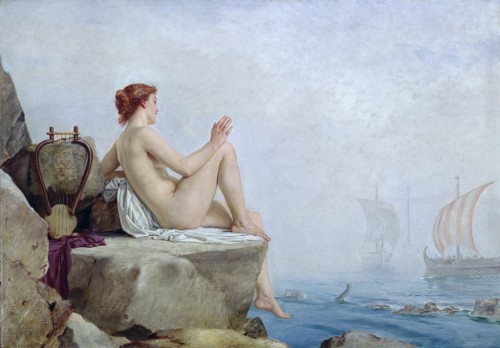
The Siren - Edward Armitage
1888














No comments:
Post a Comment